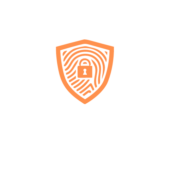
In the digital age, schools often impose strict internet restrictions that can feel more like a prison than a place of learning. Students might find themselves yearning to access educational resources, social media, or even that hilarious cat video their friends keep raving about. Enter proxy servers—the unsung heroes of the internet! These nifty tools can help students navigate around those pesky firewalls while keeping their online activities under the radar.
Proxy Servers For School
Proxy servers serve as intermediaries between users and the internet, allowing for enhanced security and access control. They provide a way for users to connect to websites without revealing their IP addresses.
Definition and Functionality
A proxy server represents a unique network component that relays requests from users to web servers. This setup masks the user’s real IP address, enhancing online privacy. When a user connects to a proxy server, that server fetches the requested content on the user’s behalf. Additionally, proxy servers can cache web pages to improve load times, manage bandwidth usage, and filter content.
Types of Proxy Servers
Several types of proxy servers cater to various needs. Forward proxies direct users’ requests to the internet, ideal for bypassing restrictions. Reverse proxies serve incoming requests, shielding the identity of internal servers. Transparent proxies do not modify requests or responses, primarily used for content caching. Anonymous proxies provide privacy by masking the user’s IP address, ensuring the user’s online actions remain concealed. Each type offers distinct advantages for different scenarios.
Benefits of Using Proxy Servers for School

Proxy servers offer several advantages for students and educational institutions. They enhance online safety and provide greater access to valuable resources.
Enhanced Security
Using proxy servers significantly increases online security. Proxy servers mask students’ IP addresses, ensuring anonymity when surfing the web. This layer of protection guards against potential cyber threats and intrusions. Additionally, many proxy servers incorporate filtering systems that block malicious sites and harmful content. By managing access to online platforms, these servers protect sensitive information from unauthorized access. Schools can utilize proxies to monitor internet traffic, promoting safe internet usage within academic environments. Thus, proxy servers contribute to a more secure digital learning experience.
Improved Internet Access
Improved internet access represents another major benefit of proxy servers in educational settings. Schools often impose restrictions on specific websites and platforms. Proxy servers bypass these limitations, allowing students to access blocked educational tools and research materials. For instance, students can utilize online libraries and databases not available on a school network. Further, proxy servers can cache frequently accessed content, enhancing loading speeds for those accessing legitimate websites. Overall, increased access to educational resources fosters a more conducive learning environment.
Choosing the Right Proxy Server for School Use
Selecting an appropriate proxy server for school use involves examining specific features and options. Understanding these elements ensures students gain maximum benefits while maintaining security.
Key Features to Consider
Consider security first; an effective proxy server should protect students’ privacy by masking IP addresses. Reliability is essential, too; students need consistent and fast access to online resources. Look for filtering capabilities that block harmful content, promoting safe browsing. Bandwidth management plays a critical role in maintaining smooth internet speed, especially during peak usage times. Compatibility with various devices enhances usability, ensuring access across smartphones, tablets, and laptops.
Popular Proxy Server Options
Several proxy server options exist for school environments. Squid stands out as an open-source caching proxy server that enhances performance through efficient content storage. KProxy offers a reliable web-based solution for bypassing restrictions without additional software. Smartproxy excels in providing a vast number of IP addresses, catering to students who may need anonymous browsing. Bright Data focuses on advanced data collection, ideal for research purposes while maintaining user confidentiality. Each of these options aligns with different needs, contributing significantly to a secure and accessible educational experience.
How to Set Up a Proxy Server in Schools
Setting up a proxy server in schools can enhance online security and improve internet access. A well-configured proxy server facilitates a better learning environment for students.
Step-by-Step Installation Guide
-
- Choose a Proxy Server Software: Select software like Squid, which suits the school’s requirements.
-
- Install the Software: Follow installation instructions specific to the operating system.
-
- Configure Network Settings: Adjust settings for the school’s network to direct traffic through the proxy.
-
- Set Up Authentication: Implement user authentication to control access and maintain security.
-
- Customize Filtering Options: Create rules to block inappropriate content and unwanted sites.
-
- Test the Proxy Server: After configuration, test the server to ensure it functions correctly and efficiently.
-
- Monitor Performance: Regularly monitor usage and adjust settings as necessary to enhance performance.
Troubleshooting Common Issues
When issues arise, several steps help resolve them. Ensure the proxy server is running; a restart often fixes connectivity issues. Check network settings for any misconfigurations that might block requests. Review log files to identify specific errors and adjust filters that may be too restrictive. If users experience slow speeds, consider increasing bandwidth limits or optimizing cache settings. Verify that updated firewall rules do not interfere with the proxy server’s functionality. Continuous monitoring and adjustments contribute to a seamless educational experience.
Conclusion
Proxy servers offer a practical solution for navigating the internet in school environments. They empower students to access essential educational resources while ensuring their online privacy and safety. By effectively bypassing restrictive measures, these servers enhance the overall learning experience.
Selecting the right proxy server is crucial for maximizing benefits. Key features such as security measures and filtering capabilities play a significant role in maintaining a safe and efficient online environment. Proper setup and ongoing management ensure that proxy servers function optimally, providing students with the tools they need to thrive in their digital education. Embracing this technology can lead to a more secure and accessible learning journey for all students.
